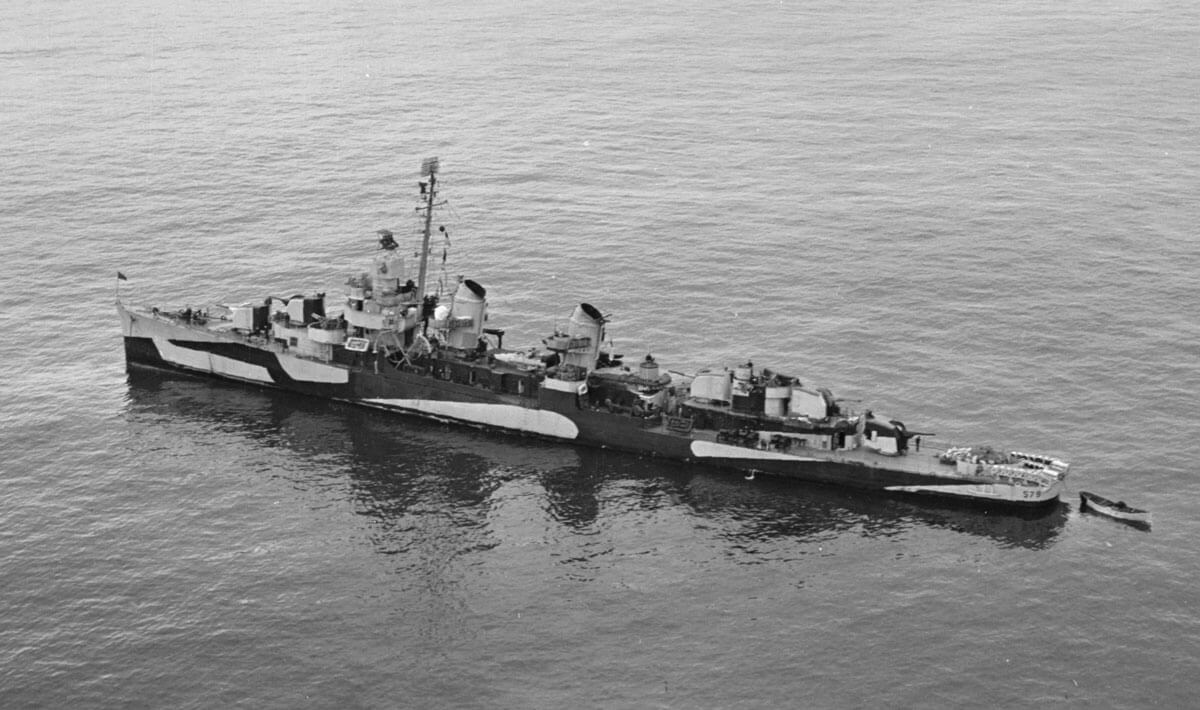Asbestos Exposure on the USS William D. Porter

USS William D. Porter: The Story Of The American Destroyer
DD-579, also known as “Willie Dee” to military personnel, has one of the most storied careers of all U.S. Navy ships despite only existing for two years.
Birth Of An infamous Legend
The town of Orange, Texas was a virtual ghost town in the 1930s. The Great Depression wiped out most businesses, to the point only 8 percent of residents were employed at one point, according to Texas Co-Op Power. But when the U.S. declared war on the Japanese on December 8, 1941, the town went from rags to riches in a matter of days.
The Levingston and Weaver shipyards were revived by U.S. Navy contracts, while Consolidated Steel Company purchased and expanded the former Orange Car & Steel Company. The town’s population exploded from a less than 3,000 to over 70,000 from 1941 to 1945. Consolidated employed over 20,000 people alone. The economic boom did not come without costs. Many former workers at the shipyards were diagnosed with mesothelioma decades later as a result of being exposed to asbestos.
USS William D. Porter, a Fletcher-class destroyer, was the 11th destroyer laid and launched at Consolidated’s Orange shipyard in a 16-month period between May 1941 and September 1942. It is named after Civil War Navy commander William David Porter.The 2050-ton ship was officially commissioned for service on July 6, 1943.
The USS Iowa Incident
The first three months of USS Porter’s service consisted mostly of routine break-in operations in the Caribbean and Atlantic Ocean. The ship then joined USS Iowa and two other other vessels in November to escort President Franklin Roosevelt and to the Casablanca Conference in Morocco. The president was meeting British Prime Minister Winston Churchill and General Chiang Kai-shek of China to discuss reconstruction efforts of Asia when the war concluded.
The waters the fleet was taking the nine-day voyage through was invested with German submarines, so it was vital for every ship and its crew to be in sync and ready to protect the President at all cost. Less than 24 hours into the voyage on November 13, a giant explosion rang out from the waters of the Atlantic, causing the entire fleet to commence anti-submarine maneuvers.
The fleet assumed it was under attack by Nazis until Lieutenant Commander Wilfred Walter, the Porter’s skipper, radioed the rest of the fleet. He informed them that a depth charge, an anti-submarine bomb, had accidentally rolled overboard and detonated. The public was not told of this incident until 15 years later.
This incident was, incidentally, the second in a string of what some may classify as bad luck for the Porter. Just 24 hours before the “Iowa incident,” Willie Dee had improperly raised its anchor, causing it to rip into another destroyer docked next to it. The day after the depth charge incident, USS Porter accidentally fired a live torpedo at USS Iowa during a drill, which was course was carrying the President. The torpedo missed USS Iowa by about 1,000 feet after the ship was once again forced to take evasive action.
Commander Walter, who was on a fast-track in the military, was placed under arrest along with the rest of the crew after it was ordered off the mission. The gunman who accidentally fired the torpedo was sentenced to 14 years in a military prison, but FDR commuted the sentence soon thereafter. The salutation “Don’t shoot! We’re Republicans” was popularized by all U.S. Navy captains and airmen that came in contact with USS Porter thereafter.
Finals Days
The USS Porter was subsequently stationed in the Aleutian Island in Alaska. It joined other ships in Okinawa during some of the fiercest battles between U.S. and Japanese forces. Willie Dee is credited for taking down several enemy aircraft, but rumors persist that it also accidentally shot down several American planes in the process. USS Porter also is said to have accidentally fired rounds at sister ships in the Battle of Okinawa.
It was June 10, 1945 when a Japanese bomber made mostly of wood slipped past USS Porter’s radar and got in firing distance of the vessel. The pilot was on a kamikaze mission but missed Willie Dee and crashed into the ocean. The plane, however, continued on its intended path and exploded directly underneath USS Porter. The blast sent Willie Dee several yards into the air before landing on its side in the ocean. Three hours later, the ship sank.
Despite all the bad luck endured by the ship and its crews throughout its life, every crew member aboard survived. The USS Porter is now remembered by its surviving crew and other military personnel as the most jinxed and unlucky ship in the history of the U.S. Navy.
Asbestos and the USS Porter
Former USS Porter Navy veterans should see a doctor immediately if they are experiencing any potential symptoms of mesothelioma. These can include shortness of breath, chronic coughing, unexpected weight loss, and chest pain. The latency period of mesothelioma can take from 15 to 60 years. The sooner patients are diagnosed, the more treatment options available.
If you have been diagnosed with mesothelioma or lung cancer from asbestos exposure, contact an experienced mesothelioma injury attorney who can analyze your situation and determine your legal options so you can make an informed decision about what’s in your best interests.
